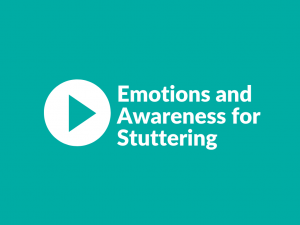Goal: Improve Ability to Regulate Emotions and Self-Calm
Sample Goal:
Children with social impairments (and even those without) often have difficulty with emotions. They may struggle with labeling emotions, identifying their own emotions, regulating their emotions, and using their knowledge of emotions in social situations. Here are some great steps and resources to help children learn about emotions.
Download the No-Prep Therapy Kit:
We have a start-to-finish therapy kit that will give you everything you need to practice this skill in therapy and send home homework. Click the packet below to open it. Then, print it out and place it in the child’s notebook or binder.
Therapy Kit Coming Soon!
Therapy Phases:
- Build Emotional Vocabulary: Student will identify and label basic emotions from pictures using the correct emotional vocabulary words (such as happy, sad, frustrated, etc.)
- Identifying One’s Own Emotions: Student will use correct emotional vocabulary to answer questions about how he is feeling in the moment or how he feels during particular situations (such as, how do you feel when someone takes your toy?).
- Regulating One’s Own Emotions: Student will identify and use coping strategies for regulating various emotions as needed.
- Navigating Others’ Emotions in Social Interactions: Student will identify emotions of others during certain social situations and practice appropriate responses to those emotions.
Supplemental Materials
Here are some other resources that may help you when working on this skill:
Identifying Emotions Worksheet
When beginning to identify emotions, it’s usually easier to start with cartoons. Emotions are generally exaggerated on cartoon faces whereas they are more subtle on a real human face. Choose a list of emotions that you expect the child to know and include that list in your actual IEP goal (or other plan). Teach those emotion words with cartoons first and then move to identifying them in pictures and videos of real human faces. Make sure you point out specific facial features to look for with specific emotions (such as a smile or scrunched up eyebrows).
Here are a few resources to help you with this step:
This simple 12-picture AAC board will help a child talk about emotions.
Once the child can identify emotions, it’s time to talk about which emotions are good and helpful and which ones get in the way
- Happy, excited, calm are all ok
- Mad, scared, frustrated, over-excited can be a problem if they get too big
- Identify which emotions the child has trouble regulating
Click here to view self-calming visual aids.
Training Videos:
Need some extra help on treating this skill? Check out these related training videos:
Teaching Self-Calming Techniques
Once the child can identify emotions, it’s time to talk about which emotions are good and helpful and which ones get in the way:
- Happy, excited, calm are all ok
- Mad, scared, frustrated, over-excited can be a problem if they get too big
- Identify which emotions the child has trouble regulating
Learning About Emotions
Description:
Overview:
Regulating Emotions:
Task Analysis (How To):
- Build Emotional Vocabulary: Student will identify and label basic emotions from pictures using the correct emotional vocabulary words (such as happy, sad, frustrated, etc.)
- Identifying One’s Own Emotions: Student will use correct emotional vocabulary to answer questions about how he is feeling in the moment or how he feels during particular situations (such as, how do you feel when someone takes your toy?).
- Regulating One’s Own Emotions: Student will identify and use coping strategies for regulating various emotions as needed.
- Navigating Others’ Emotions in Social Interactions: Student will identify emotions of others during certain social situations and practice appropriate responses to those emotions.
Activities:
Step one is for the child to understand basic emotional vocabulary and gain a full understanding of various emotions. Keep in mind that the emotions that should be learned will vary by age. Generally we start with happy, mad, and sad as the first emotions we start with. Even 2-year-olds can start to understand those emotions. As children get older, the range of emotions that they can understand and identify should grow. There is no particular age norms for every single emotion in the English language so use your best judgement.
When beginning to identify emotions, it’s usually easier to start with cartoons. Emotions are generally exaggerated on cartoon faces whereas they are more subtle on a real human face. Choose a list of emotions that you expect the child to know and include that list in your actual IEP goal (or other plan). Teach those emotion words with cartoons first and then move to identifying them in pictures and videos of real human faces. Make sure you point out specific facial features to look for with specific emotions (such as a smile or scrunched up eyebrows).
Here are a few resources to help you with this step:
Now that the child can respond to his name with no distractions around, we want to increase the amount of distractions slightly and see how he does.
The next time you are ready to work on this skill, sit down with the child in a location that has more distractions than the last one. If you use your therapy room again, find a few more distractions/toys to put out around the child. Or keep the door open so it’s a bit more noisy. You can also use the classroom environment but make sure it’s not free play or a highly unstructured time. The goal here is to gradually increase the level of distraction as the child continues to practice responding to his name.
Do the same activity from the last step where you say his name and reward him if he looks at you. If he doesn’t look at you, say his name again louder and make some sort of commotion that will catch his attention. Then, reward him when he does look at you. This may be harder for him now that there are more distractions. Make sure that you give him a moment to play between each time you try this. You want to make sure that he is focused on something else when you call his name so that he is actually practicing bringing himself out of what he’s doing instead of simply continuing to look at you once his focus is already on you.
Keep doing this until the child will look at you when you say his name about 80% of the time. By the time you’re ready to move on, you shouldn’t need to wave and cause a commotion to catch the child’s attention. He should be able to respond to just his name.
If the child is not able to make progress in this environment, go back to slightly fewer distractions and make sure that the motivator or reinforcer is really something he enjoys.
Once the child can identify emotions, it’s time to talk about which emotions are good and helpful and which ones get in the way
- Happy, excited, calm are all ok
- Mad, scared, frustrated, over-excited can be a problem if they get too big
- Identify which emotions the child has trouble regulating
- Take the problematic emotions and talk about situations that trigger those emotions and what happens physically (what does the child do)
- Brainstorm possible ways to regulate that emotion, coping strategies, with the child.
- Practice coping strategies when not feeling the emotion and have the child choose is favorite 3-5 strategies.
- Create a choice board with those strategies.
- The next time the child gets into that emotion or mood, offer the choice board and have him try strategies until he finds one that works.
- Continue doing this until the child can use the choice board independently or use the strategies without needing to go to the choice board.
Click here to view the resource on self-calming techniques:
Now that the child has a great grasp on emotions, it’s time to work on using that knowledge in social interactions. This will be difficult for younger children so I would suggest this as a progression of the skill for older children.
- First, read him/her a scenario and ask them what emotion the person in the scenario is probably feeling. Talk about why people feel certain emotions.
- Choose one emotion at a time to work on when it comes to social interactions. Talk about possible reasons someone may feel that way and what the student can do if a friend is expressing that emotion. For example, talk about why people get angry. Then, talk about what the student can do if someone is getting angry. The student can stop doing what he’s doing in case it is making the person angry. Or, the student can ask the person if he/she is causing the anger. If it’s not the student causing the anger, the student could ask if there’s any way that he/she could help and if not, seek out an adult if the anger is getting out of control.
- Role play situations with that emotion and have the student react to someone else experiencing that emotion.
- Next, talk about what the student should do if he/she is experiencing that emotion in a social situation. Talk about how he can explain to those around him how he’s feeling and what would make it better.
- Role play situations where the student is pretending to feel that emotion.
- Have the student pay attention and watch for that emotion during social interactions and report back to you how it was handled.
- Move on to a new emotion once the child understands what to do with the current emotion.
Troubleshooting:
What do you do if these things don’t work the way they’re supposed to? Well, nothing’s ever easy, is it? Try these great troubleshooting tips that some of our other members have found helpful. Click the problem to drop down the link to the solution.

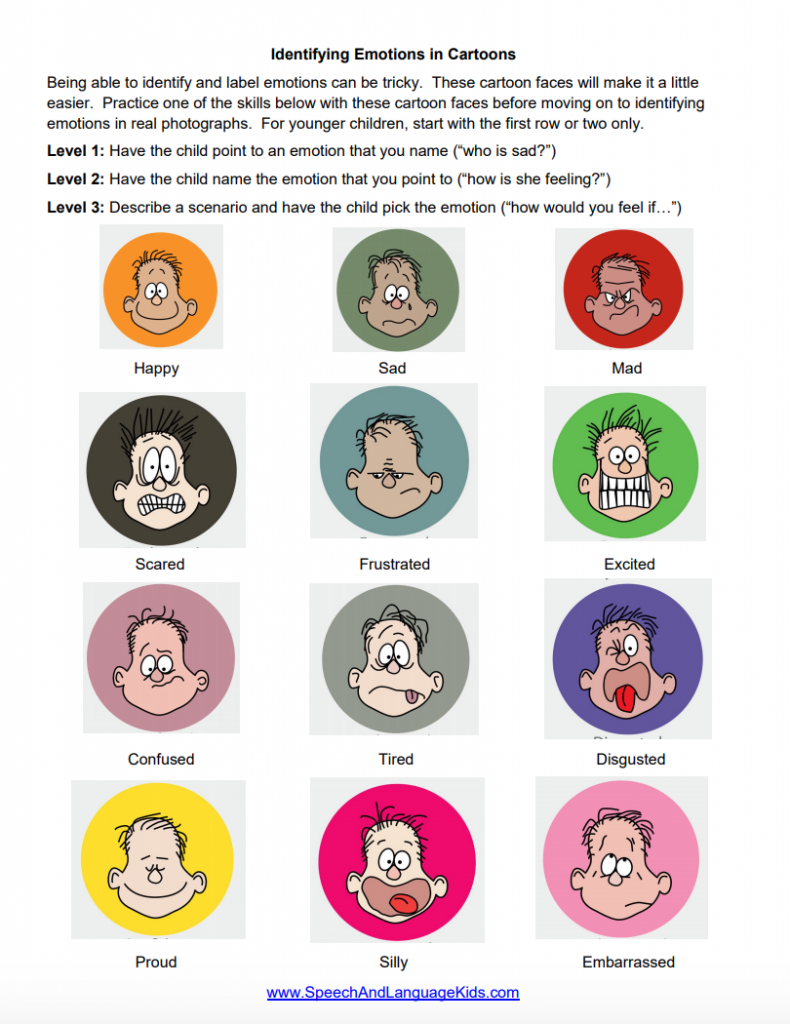
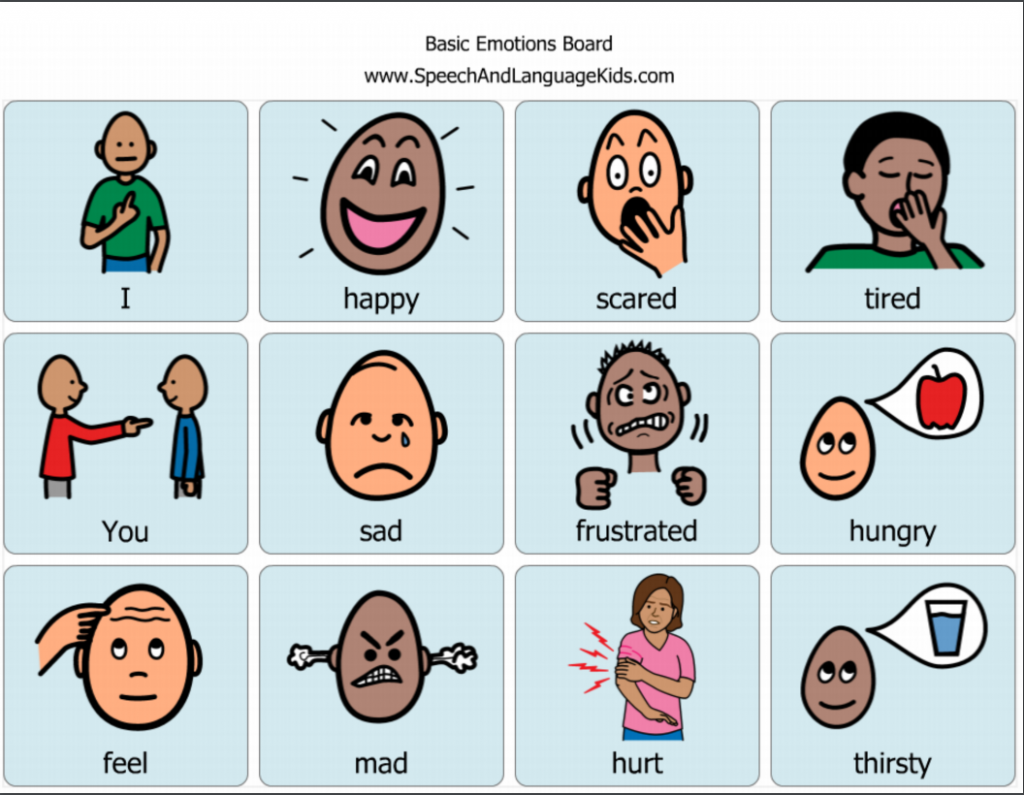
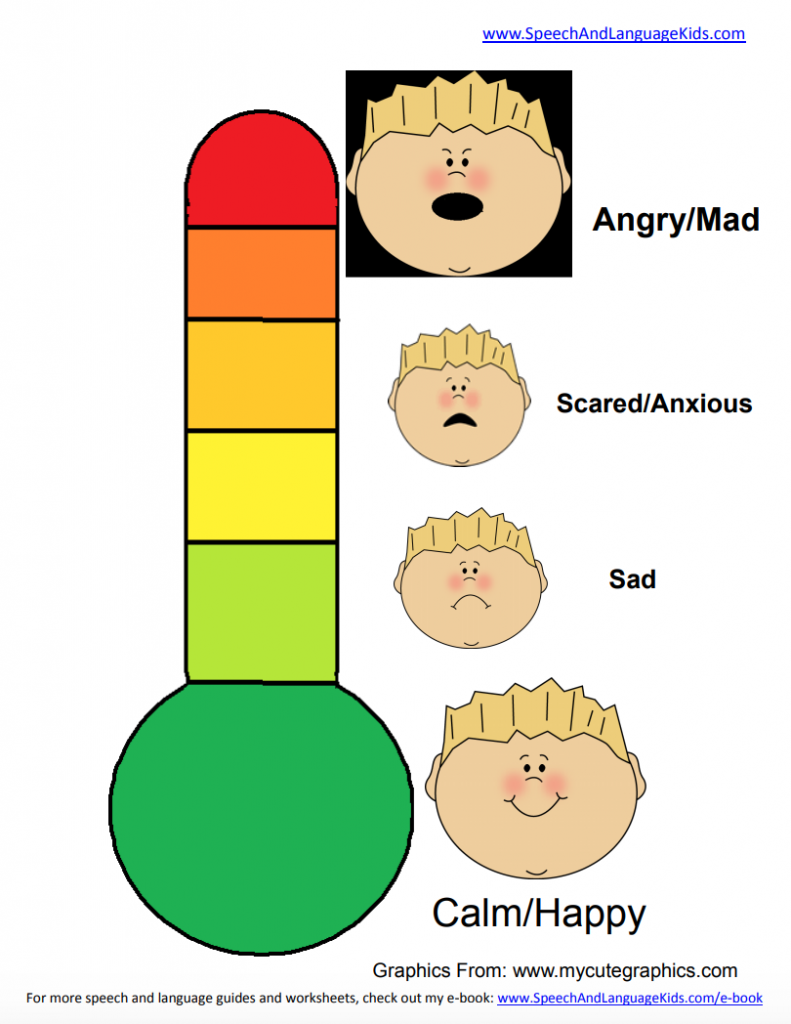
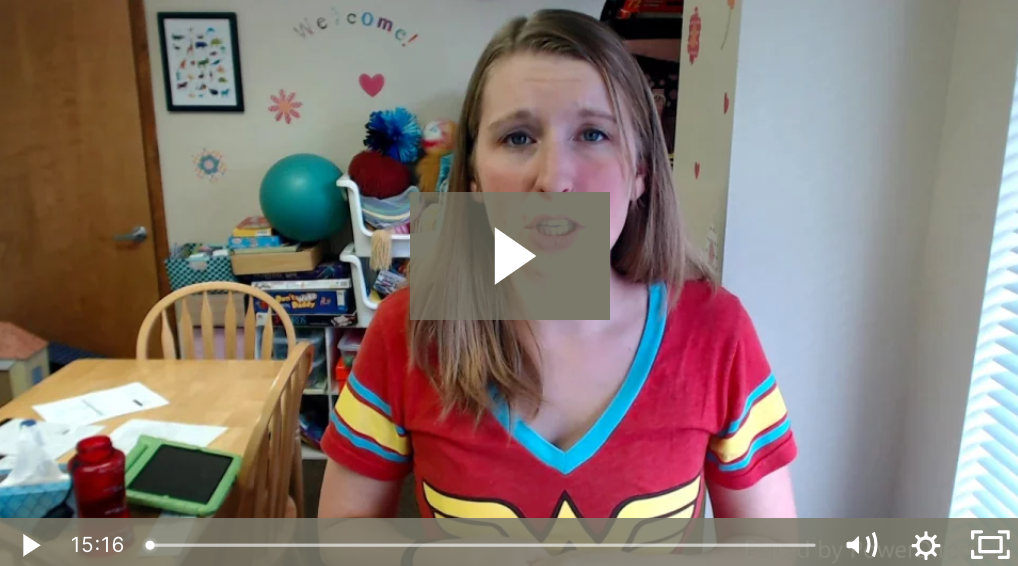
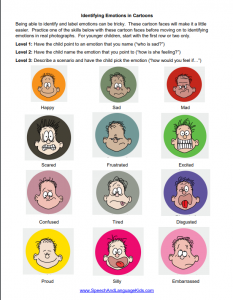 Identifying Emotions Worksheets
Identifying Emotions Worksheets
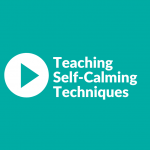
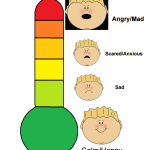 Self-Calming Visual Aids
Self-Calming Visual Aids